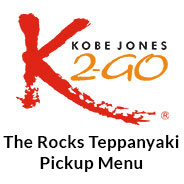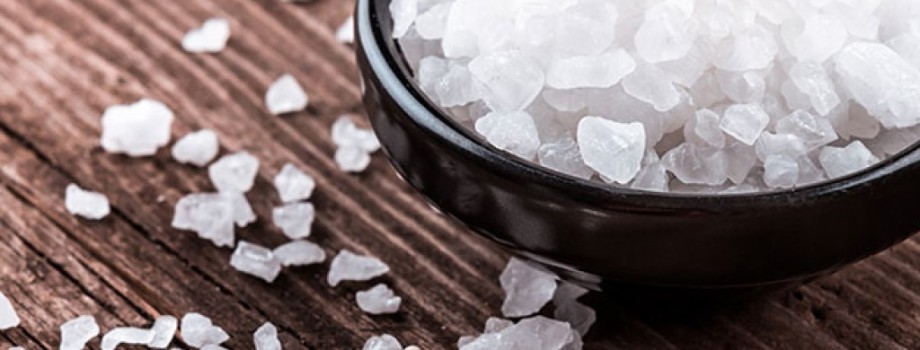The Japanese look at salt very differently from the rest of the world. In western cultures, salt is often associated with high blood pressure, increased heart risk and hypertension. But in Japan salt is considered sacred, and is an integral part of everyday life.
Japanese people believe salt is cleansing, and a preserver of purity. In the purification rituals of misogi (a similar concept to baptism), salt is used to remove all spiritual dirt from the individual. Within Shinto purification rituals, salt is one of three items offered to the Kamias an instrument to ward off evil spirits. And during childbirth a mother will not only bathe in salt water to purify herself, but will also scatter salt around the room to purify the space as well.
But these few practices barely skim the surface. At funerals, salt can be found on either side of the house entrance. Once the coffin has been removed, the house is then purified of spirits by scattering salt around the floors. Those attending the funeral will also scatter salt at their own front doors, believing this will stop the spirits from following them home.
At weddings salt is used for purification, but also to provide the “force of life”. In restaurants, stores, theatres and other public places, two cone-shaped piles of salt may sit beside the entrance, to both purify the establishment and attract good patronage.
Even sport gets in on the act, with sumo wrestlers scattering salt in the ring before a match. This not only purifies the ring, but signifies how the wrestlers are at the mercy of the mystical powers of the divine.
What’s behind these beliefs?
For centuries, salt production has been an important activity throughout Japan, and coastal communities have developed sophisticated techniques for producing this vital mineral from seawater.
One of the oldest records of salt making appears in the eighth-century chronicles of Kojikiand Nihon shoki, Japan’s oldest mythological and historical writings. Outside of literature, the importance of salt throughout history is reflected in the presence of salt routes, and place names associated with shrines in which salt gods are worshipped.
Salt is one of the traditional purifiers in Japan, along with fire, smoke, sake, sand and water. The laborious and time-consuming processes, including evaporating seawater for sea salt using heat from the sun, make it all the more special, and it was a natural step for Japan to begin using it in rituals, traditions and customs.
In terms of establishments, the reasons for salt in doorways is a little more complex. The belief that salt helps to attract customers draws from an ancient story from China during the Heian Period (when just about anything Chinese was admired), and centres around an Emperor of China and his 3,000 concubines. It was said that the Emperor would make his way by ox cart to as many concubines as he could manage in one night. Vying for his attention, one of the concubines cleverly lay salt at her front door. This attracted the ox, which in turn brought the Emperor to her door.
The second part of the custom stems from purification beliefs, with many establishments using salt at the door to signify to customers they take pride in cleanliness and purity. Shaping the salt into cones and replacing it with fresh salt every day is a sure sign great care is taken in every aspect of the business.
Spot salt at the door of a Japanese restaurant, and you’ll know you’re in for an authentic treat!
Salt in cooking
Salt is often a defining flavour of Japanese dishes, but it actually has many roles in the preparation and cooking of food. Salt plays a major part in the production of dried fish and in the pickling of vegetables, and chefs often use salt for purposes such as:
- soaking peeled apples to stop them from turning brown
- draining water from wilting vegetables
- promoting the coagulation of meat and fish protein during grilling
- extracting water from fish and condensing its umami
As a result, Japanese cuisine is generally quite high in salt. Condiments like soy sauce (an all-purpose seasoning that goes with just about every Japanese meal), and umeboshi (Japanese plum preserved in salt) further contribute additional salt.
There is also a component to Japanese eating habits called teshio, which is a small cup or dish of salt laid on the table come meal time. While traditionally teshio is meant as a symbolic purification gesture, many Japanese are known to add more salt to their food from the small dish. The term “teshio ne kakeru” translates as “to help oneself to salt on one’s own”.
So does this mean that Japanese cuisine is bad for you?
Absolutely not. The traditional Japanese diet, with its emphasis on vegetables, seafood, soy, clear broth, rice, green tea and seaweed, make it one of the healthiest cuisines in the world. If you’re trying to follow a healthy diet, dining at a Japanese restaurant is a good choice.
Japanese people have the world’s highest life expectancy, with men living to on average 78, and women’s 85. Even though there are high levels of pollution, stress, smoking and drinking, the Japanese still outlive the rest of the world. Why? Largely because of their diet.
Sure, the Japanese love their salt, but salt has been a highly prized substance for thousands of years across all cultures and continents, and is an integral part to a balanced and healthy diet. Salt is composed of sodium and chloride, two electrolytes that help maintain fluid balance and the transmission of nerve impulses in the body. In your intestines, salt helps you absorb chloride, amino acids, glucose and water. It even helps regulate blood pressure.
The fact is, we need salt to survive – just not too much of it. As long as you monitor the amount of salt you consume, Japanese cuisine is a great choice for healthy eating.







 (16 votes, average: 3.75 out of 5)
(16 votes, average: 3.75 out of 5)